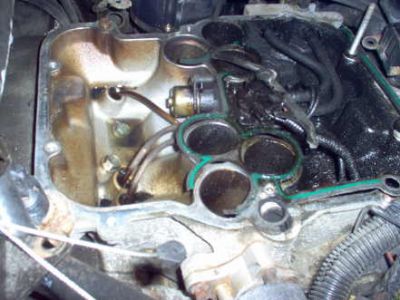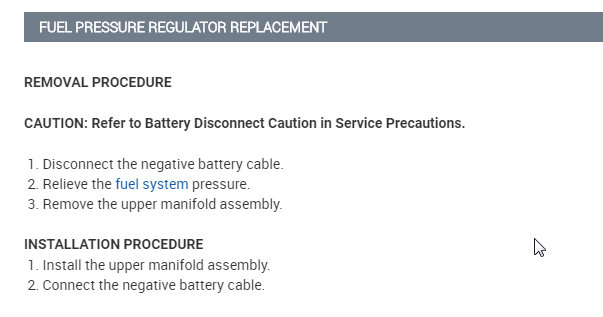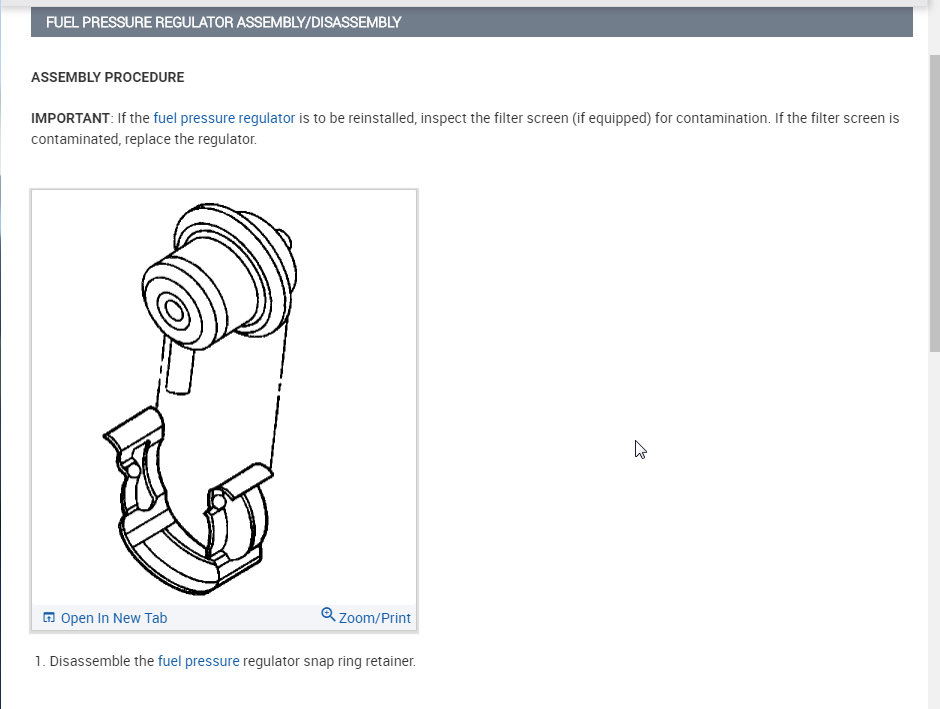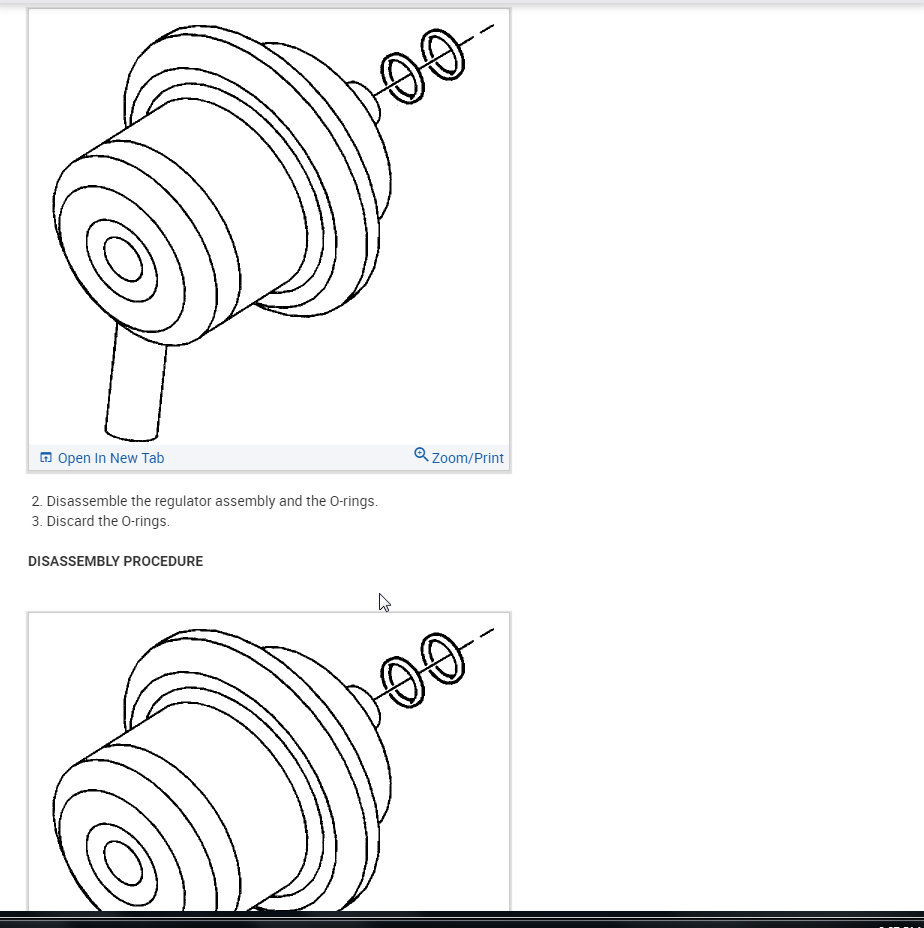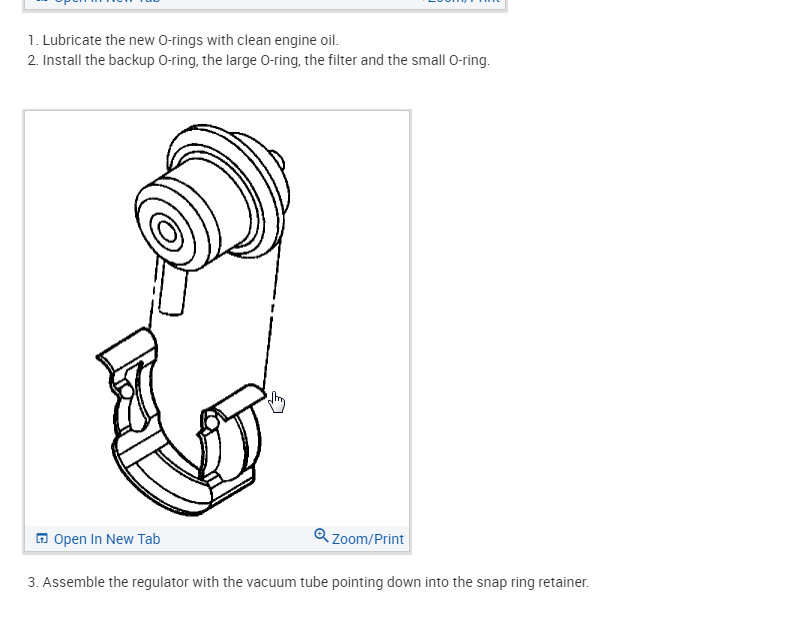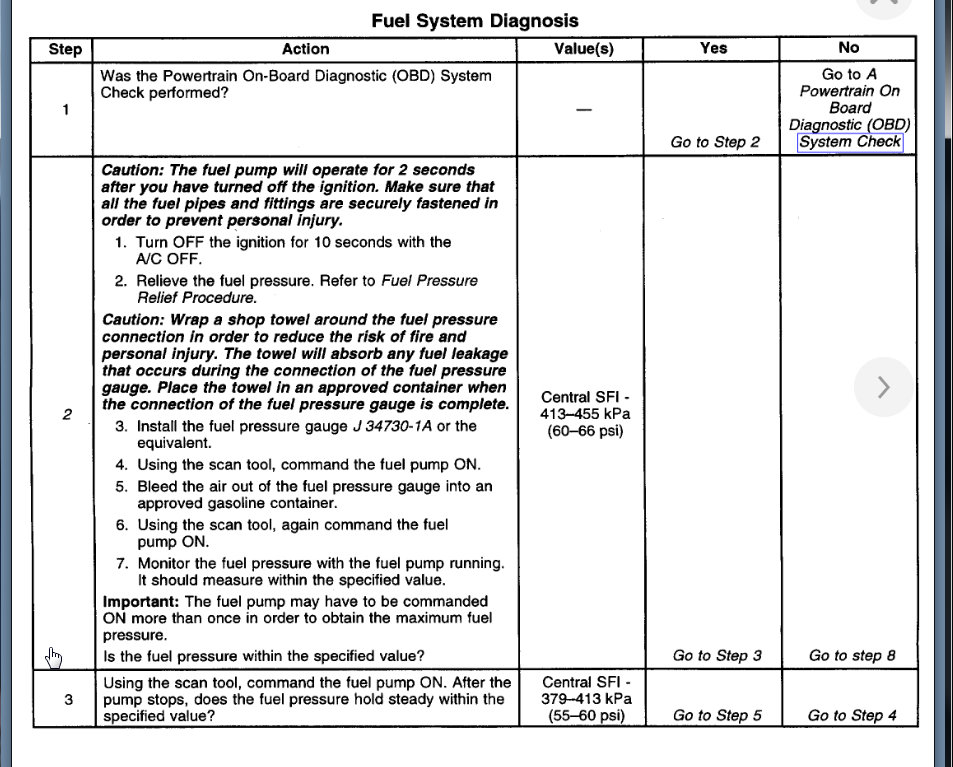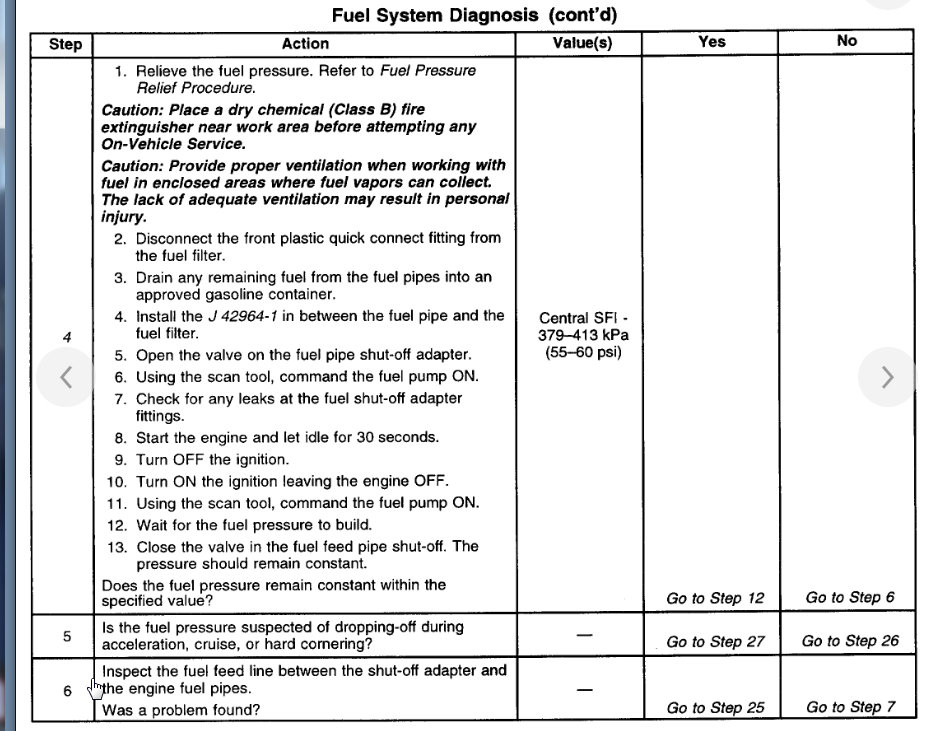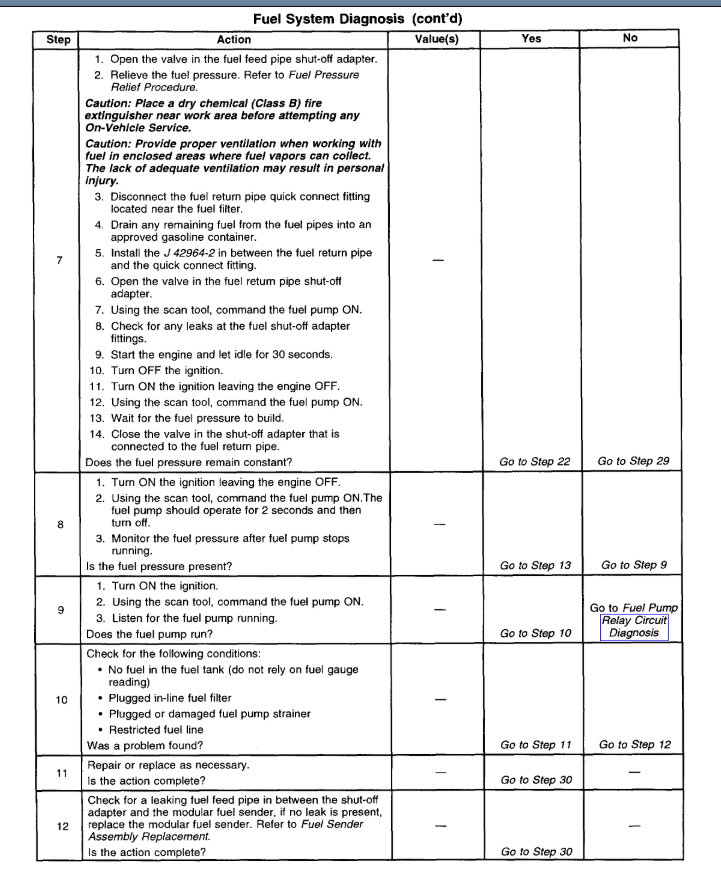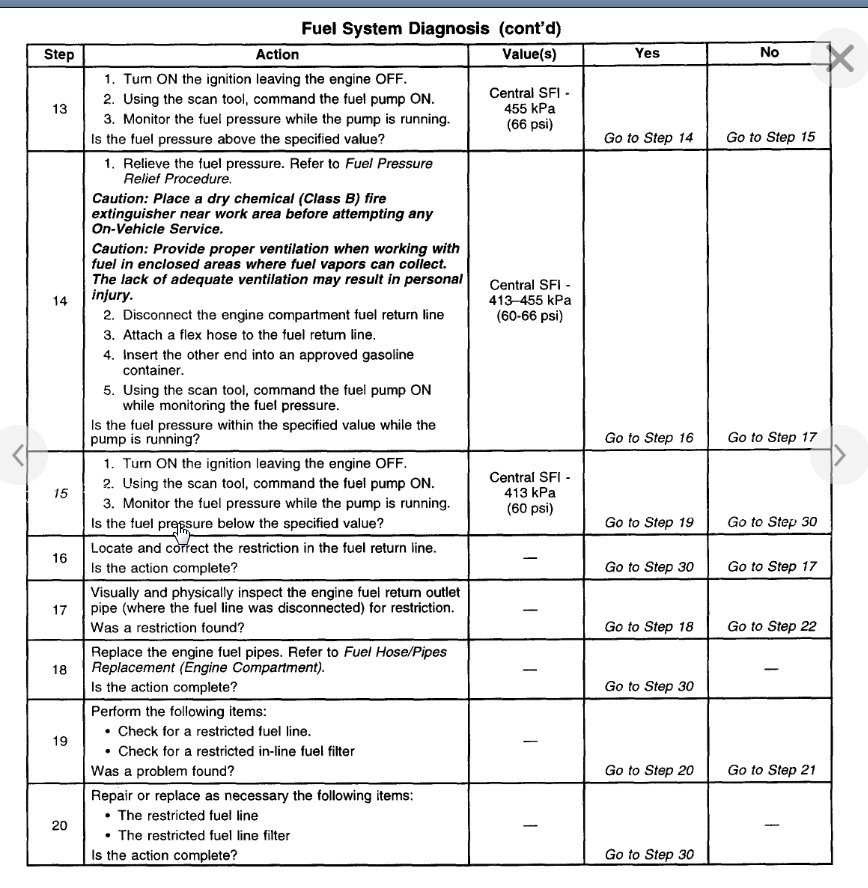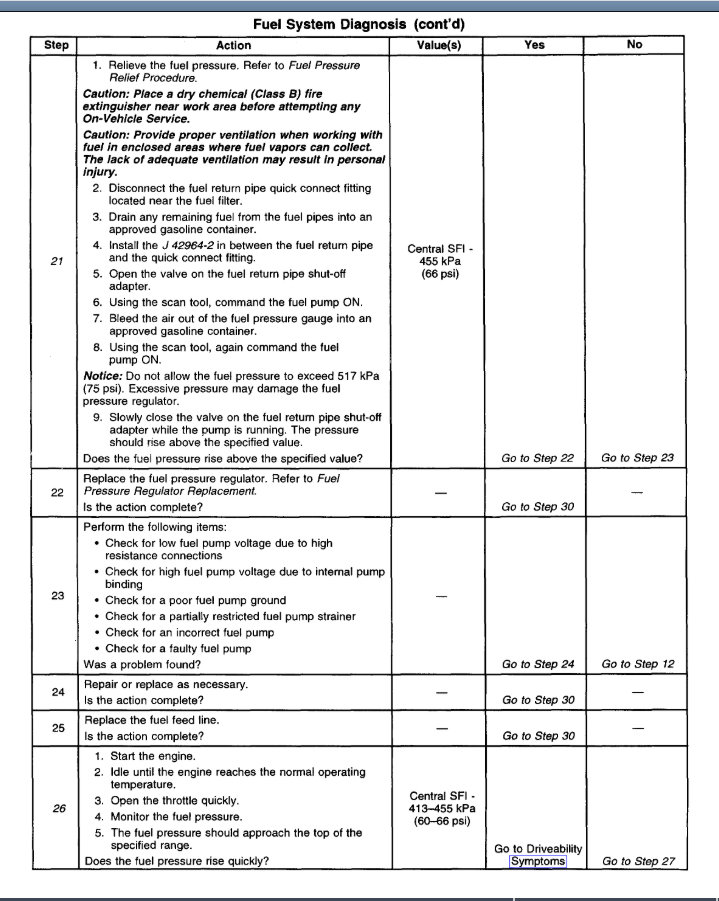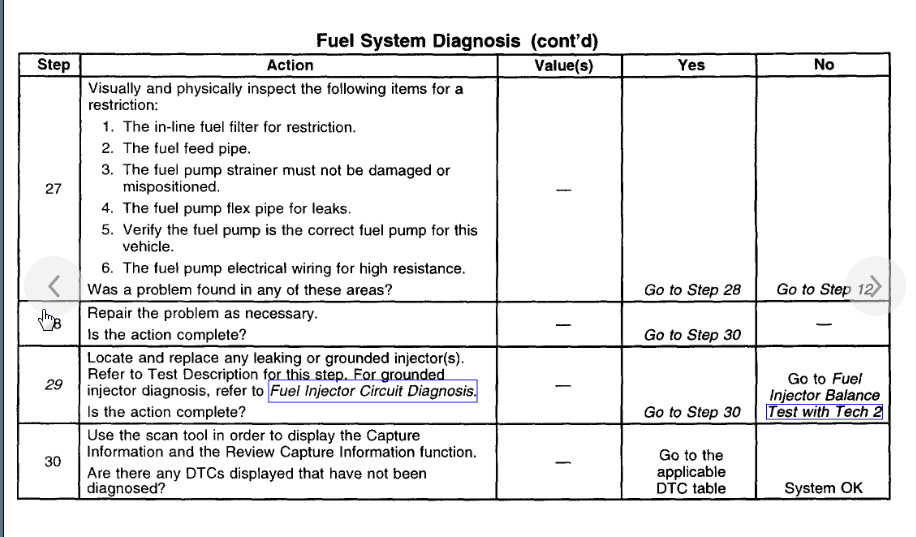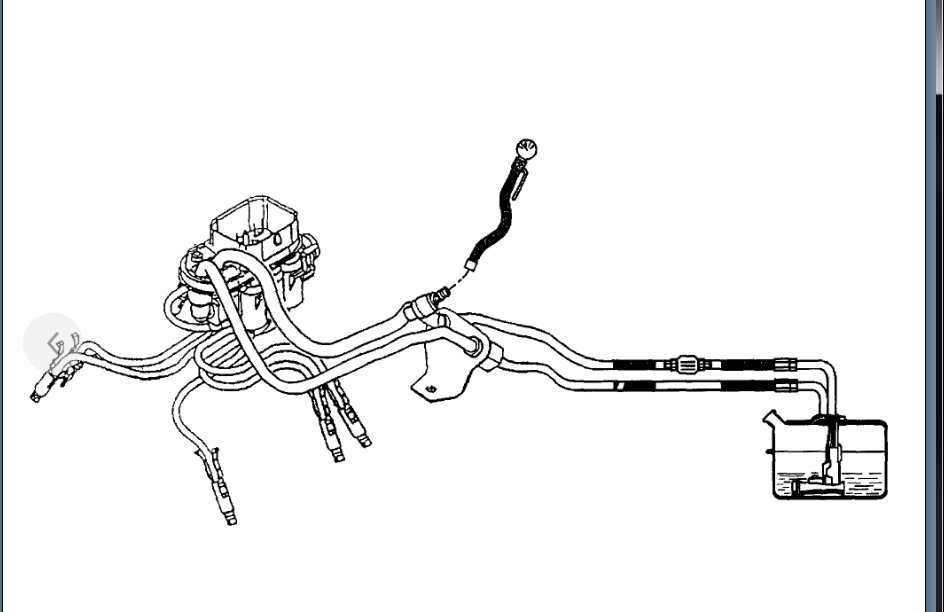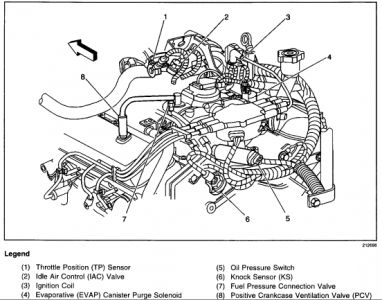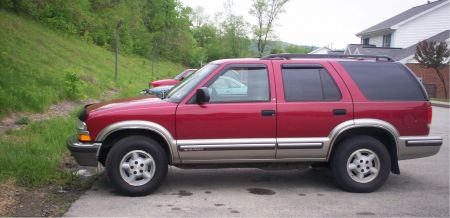Possible repair options (So I've been told/so I've read so far):
A. Fuel Pressure Regulator
B. EGR Valve
C. Mass Airflow Sensor (MAF or VAF code given at AutoZone)
D. Fuel Injectors / Fuel Injector Spider Assembly
The truck runs terrible. At first, the problem started with it being harder and harder to start. At first I would crank the engine a little longer each day until it finally stopped starting. Now I have to dump about 1/4 of an ounce of gas (a splash) in the throttle body to get it to start every morning. Sometimes, when I shut it off, if I restart it within 2 to 3 minutes, I don't have to dump gas in the throttle body to get it to start. In addition, I have been dumping gas in the throttle body for about 3 months now. If I have the truck pushed and I “pop the clutch”, the engine starts.
In addition, and way before the truck stopped starting when cranking the motor, the truck had and has no pickup. When I give it gas, it "hesitates" and "bogs down" when gas is given. To take off from a light or at any time I am at a standstill, I have to push in the clutch and rev the engine and then "feather" the clutch with the engine revving high to get it to move and then it will either go or "bog down" again but if I do this, it eventually goes.
If I am stopped at any "uphill incline", the truck seems like it is not getting any gas and will shut off. It will idle on an incline but will not go and will die when I give it gas. I have to push in the clutch, hold the break and rev the engine with my hand (what seems like) to get any gas into the engine to get the engine to run. Then I feather the clutch like stated above to get the truck to go. In addition, if I am at an incline and I let it roll back and get the truck on a level surface again, the truck revs when I give it gas.
At first, about a year and a half ago, I went to AutoZone and was told the codes given were telling me to replace the O2 Oxygen Sensors, which I replaced all three. Still no help.
I was then told I need to replace the entire "Spider Injector Assembly" ($800.00 total parts and labor) because (as it was explained to me by the mechanic) "the injectors are bad and it is losing its "prime" which is why it won't start unless I dump gas in the throttle body whenever I want to start the truck". This repair attempt will be my last resort.
Also, I have vacuum lines running from the driver’s side under the hood right next to the master brake cylinder running into a connection on the side fender inside the engine compartment. The vacuum lines were all dry rotted so I replaced them. The vacuum lines started at the connection point on the driver’s side inside the fender and went to a "one way" vacuum “part” that had 2 vacuum lines attached to it. One of the vacuum lines went to a vacuum line that goes “downward” and I cannot find where it terminates but I think it goes to the Master Cylinder, although I cannot be certain. The 2nd vacuum line goes to a sensor directly behind and (if you are standing in FRONT of the truck) to the right of the throttle body. The part has a black plastic piece that appears to be able to be removed if you give it a 1/8 turn. The black plastic part the 2nd vacuum line goes to also has a rubber hose connected to it on top that goes to the valve that is mounted into the valve cover.
1. Is the part the second vacuum line attached to, mounted behind my throttle body, my Fuel Pressure Regulator?
2. What is the part that is mounted into the valve cover?
In addition, I have been told that when I start the truck, I “might” smell gas and that is telling me that my membrane on my Fuel Pressure Regulator is ruptured, and I do smell gas when I start it but I cannot be sure if it is gas leaking from the Fuel Pressure Regulator or if is because I just dumped gas in the Throttle Body.
So, the day I replaced the dry rotted vacuum lines (3 days ago), I had the guy at AutoZone run the codes on my engine since the “service engine soon” light was on. It came back with “MAF or VAF Signal Low” as well as one of my O2 sensors was bad again.
In addition to this, I moved from Maryland to Florida 2 weeks ago. One morning while driving, the truck just started to lose all power as I was driving. I was going 80 mph and then all the sudden, no matter what, the truck just kept slowing down. The more gas I gave it, the more it would bog down. I pulled over and after checking most everything; I pulled the cover off the Air Filter Housing to make sure there was nothing inside the air filter housing stopping air from entering the engine. The engine was running and when I stuck my hand inside the tube that takes the air from the air filter to my throttle body to make sure there was nothing in front of the MAF (Mass Airflow Sensor), the engine started to “bog down”.
Important note: I made sure I didn’t disrupt or “stop” the airflow going into the throttle body while checking the MAF and it started to “bog down” with what just seemed like the heat from my hand.
I disconnected the MAF sensor connector as well as the other sensor wiring (Which I am assuming is the VAF sensor which is mounted directly behind the MAF sensor in the rubber tube) and the I was able to get the truck back up to 80 mph on the highway but it still “bogs down” and stalls out when I give it gas from a standstill and I still have to feather the clutch but at least I can drive on the highway now. In addition, I still have the wires/connectors to the MAF and other sensor located directly behind the MAF disconnected. Also, it takes like forever to get the truck up to 60 mph.
3. I have read that if I “clean” the MAF sensor, all my problems will disappear. How do I clean the MAF sensor, with gas or some solution? What can't I clean the MAF sensor with? And please, I don’t need any “safety warnings” about using gas to clean anything, just tell me if gas or something else is better to clean the MAF with.
On another forum, I read that the possible problem in the EGR valve which I have mounted where it is supposed to be. I read that I need to “strike the housing of the EGR valve with a hammer or a piece of pipe so I can reach the housing” when the engine is running and listen if the engine runs better. If so, I need to replace the EGR valve.
I have read that the 2 most common problems are the A) Fuel Pressure Regulator (Which I cannot find on my trucks engine) or the B) EGR valve sticking.
I’ve used assorted fuel injector cleaners multiple times in an effort to perhaps help the fuel injectors. I keep the truck tuned (cap, rotor, plugs, filters, etc) and change the oil every 3,000 miles with the manufacturers specified oil.
4. Where oh where is my Fuel Pressure Regulator on my truck?
5. Is there some other way to check the EGR valve without beating it?
6. Can I “bypass” the MAF sensor the check and see if this is really the problem?
Please help me! Tell me how to fix this truck without having to take it to a dealership to have the codes read on a real analyzer or without buying part after part and “shooting in the dark” all the time.
In addition, I can add pictures at any time as I have a digital camera at my disposal at any time!
SPONSORED LINKS
Thursday, November 1st, 2007 AT 8:23 AM
